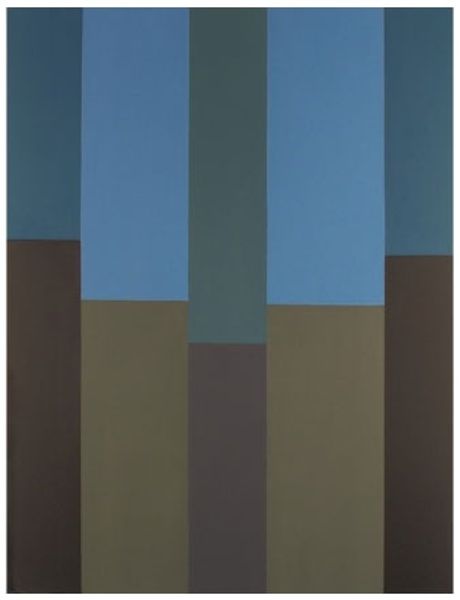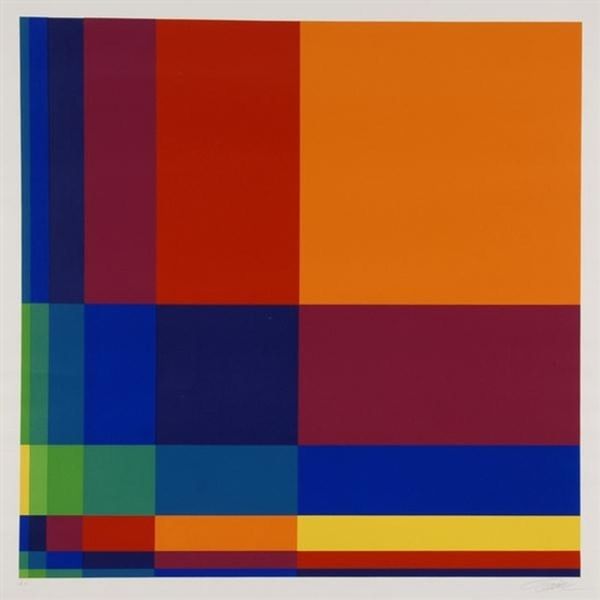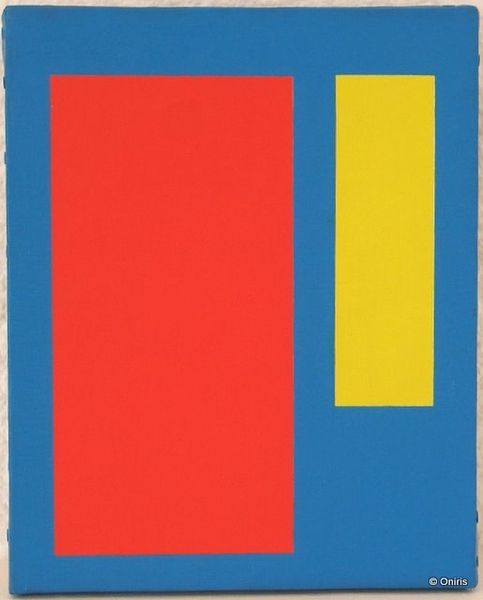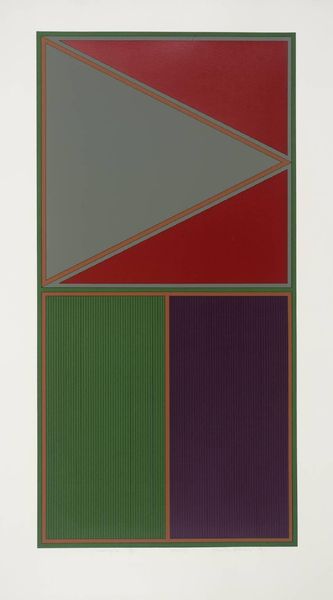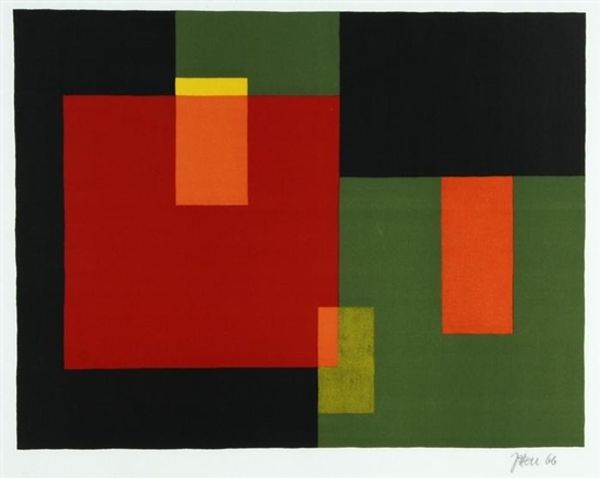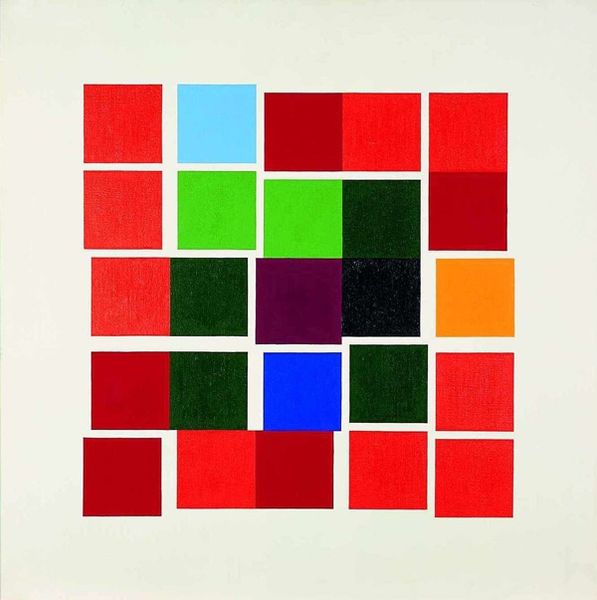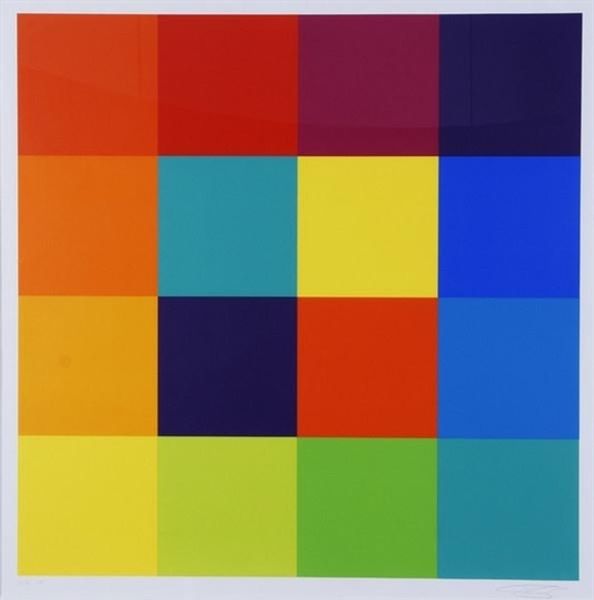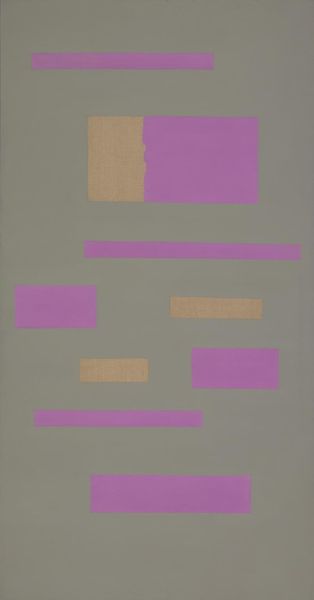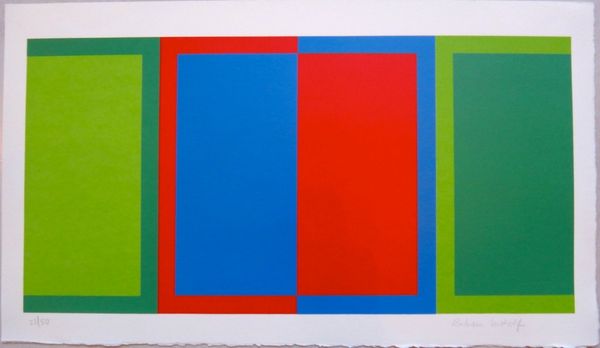
print, acrylic-paint
# print
#
colour-field-painting
#
acrylic-paint
#
geometric
#
abstraction
#
hard-edge-painting
Copyright: Verena Loewensberg,Fair Use
Curator: Verena Loewensberg's "Untitled" piece from 1968 presents us with a striking example of hard-edge painting, a print using acrylic paint to achieve its clean lines. Editor: Immediately, I’m drawn to the colour palette. The olive green, burnt orange, and muted purple interact in a way that’s both bold and slightly melancholic. There’s a subtle tension. Curator: That tension is key. Loewensberg was a central figure in the Zurich Concrete art movement, a movement that sought to create art based on purely geometric principles. It's interesting to see how she balances the cool rationality of geometric abstraction with that emotive use of colour you pinpointed. Editor: It's deceptively simple. The rectangles are arranged in a straightforward manner, but their placement, their relationship to each other, feels intentional. It’s a power play of color and form. The slightly off-center composition prevents it from feeling static. Curator: Absolutely, and considering its creation in '68, it’s worth pondering what this visual language might communicate. While it avoids explicit representation, there’s an argument to be made for reading the solid blocks of colour as allusions to societal structures, particularly in light of social and political upheavals. The artwork allows color and forms to act like social building blocks. Editor: It reminds me of the urban landscape, blocks stacked atop one another, reflecting how communities interact and take shape. But it also mirrors rigid, predefined social roles and the societal expectation of fitting perfectly into predetermined spaces, evoking an isolating and rigid feeling. Curator: Perhaps that perceived isolation you mentioned relates to a certain postwar sensibility prevalent within Concrete Art and, on another level, addresses social issues such as race and gender within postwar abstract visual language. Editor: Exactly, these seemingly abstract forms resonate deeply. The stark juxtaposition feels purposeful and stirs up thoughts about freedom of expression against rigid structure. Curator: Thank you. Exploring this dynamic between pure geometry and potential socio-political meanings allows us to see this work with fresh eyes. Editor: Yes, the interplay Loewensberg masterfully presents transcends aesthetics and invites reflection on society itself.
Comments
No comments
Be the first to comment and join the conversation on the ultimate creative platform.


